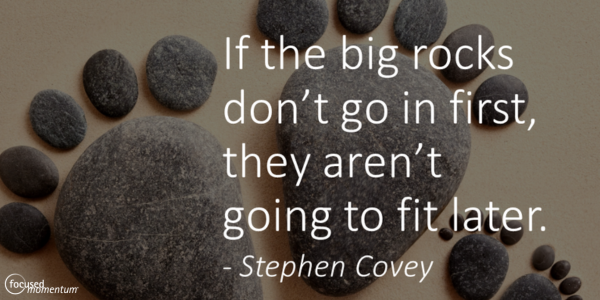3 Indications your Strategic Planning is NOT strategic
Recently I was talking with a client about the new company she was working in and her concern that the strategic planning process at her new company...
3 min read
.webp) Cecilia Lynch
Sep 9, 2019 5:07:00 PM
Cecilia Lynch
Sep 9, 2019 5:07:00 PM

A constant in strategic management is the need to respond quickly to perceived threats or potential opportunities. More than ever before, the speed of decision-making is as important as the decision itself.
As talented individuals view all threats as opportunities and all opportunities with a high degree of urgency, empowered teams can unintentionally move from high performing to flailing. They suffer from the contagion known as a pervasive lack of strategic focus.
Could a lack of strategic focus be taking your organization in the wrong direction?
How many of these symptoms do you see in your organization?
The first symptom is inefficiency. Are there endless questions that your team brings up and a wide array of opinions on the “right” answer? Which is the best way to optimize this or that opportunity? With inefficiency, there is lots of activity: meetings and emails and an acute sense of urgency and even unofficial “launches” of solutions to take advantage of the opportunities now! Instead of creating a pathway towards solid momentum forward, you get the distinct sensation that actions are expanding in a disjointed and potential chaotic fashion. Ultimately, there are gaps and overlaps in these activities, and multiple on-the-fly conference calls to settle everyone down, refocus their efforts and clarify who’s going to do what. Leaning into focusing everyone in this manner works for a time, but will the focus last?
The second symptom grows out of inefficiency; it is frustration. You see people being very short-tempered, and your talented team becomes annoyed with each other. Some start to over control and offend their peers while others are openly articulating: “What are we doing?” Doubt and cynicism begin to overshadow optimism. The job is getting done, but at what cost?
The third and most dire symptom of a lack of strategic focus is disengagement. It often looks like poor participation in meetings, including very short answers from your once energetic team members. They are still contributing, but only at a minimal level. They have lost optimism, and you have lost access to their talent. How do you re-engage them?
Perhaps you see some or all of these symptoms in your organization? Have you been frustrated by your organization’s inability to take advantage of opportunities and regain your growth? It’s not too late.
Here is how to re-establish strategic focus in your organization by establishing a discipline to how you approach new opportunities.
Fully examine all the opportunities that are presenting themselves.
Properly vet the now much shorter list of opportunities against your organization’s Strategic Goals.
By answering the first two questions, you now have a sense of if this opportunity deserves your attention. If it does, it is time to form a small group to take on the development of the idea to a draft plan for more completely evaluating if you are going to add it to your goals.
Secure the limited resources the team will require - time to participate in the team, possibly a small budget for research or travel costs - and give them a short timetable to complete the first milestone in developing the opportunity. Continue to evaluate and invest if the idea matures into a high potential strategy or cut the team loose if upon deeper exploration it looses its appeal.
The goal with this recommended approach is to develop the idea while allowing the rest of your team focus on your existing business. By doing this you will enhance strategic thinking and provide a way for emerging and innovative ideas to thrive at their earliest stages.
When you believe the team has produced a viable recommendation, introduce it to your organization and integrate it into your operations or next planning cycle.

Recently I was talking with a client about the new company she was working in and her concern that the strategic planning process at her new company...

Gaining a different perspective is enlightening. Embracing new influences can be transformational. However, integrating theseon success are ideal...

Last week I wrote a post on creating a strategic thinking discipline to accommodate the ever-changing environments we all live and work in today: Is...